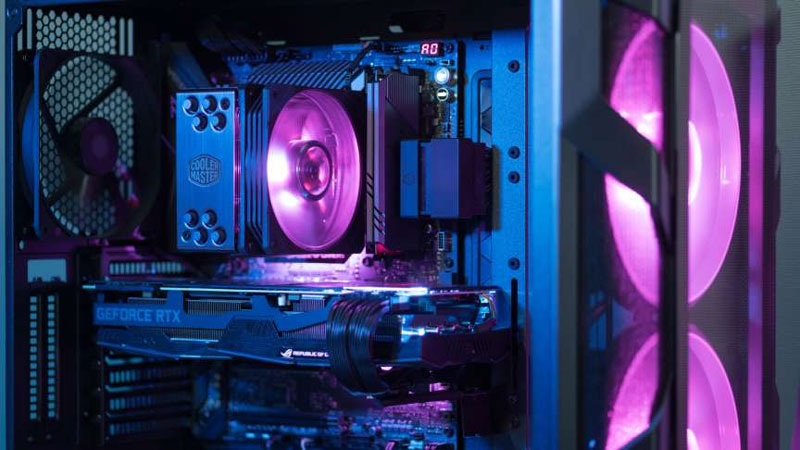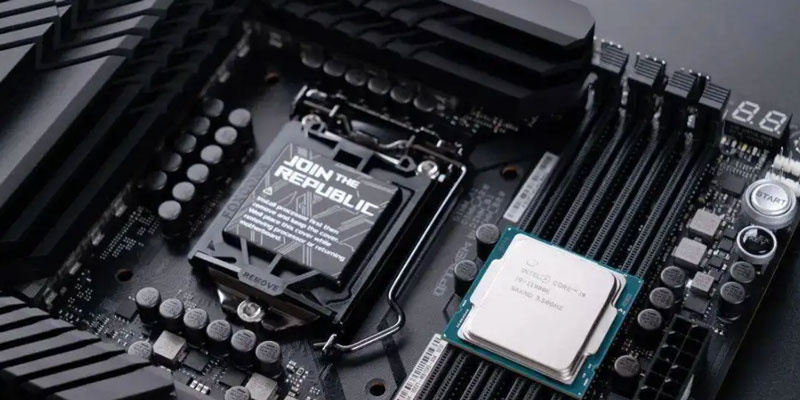How to Increase the Speed of Your PC's CPU
Martin Wilson
Mar 07, 2022
Overclocking isn't that difficult. At the very least, it's not so difficult as it was or as mysterious as certain web pages will claim to believe. Likely, you don't have to crack open your case. It's likely that you already have everything you require to get into the dark arts and squeeze some extra horsepower out of your gaming equipment. If you're lucky enough, you might be able to squeeze enough performance to avoid having to upgrade for a couple of months.

Identify Your CPU
Before you begin overclocking the CPU, determine what your system is capable of -- your CPU might not even allow overclocking in the first instance. Should it do, figure out its theoretical maximums by doing some investigation. Where processors are available to overclock is an area in which AMD Intel and Intel differ significantly. It is possible to overclock the most current Ryzen CPUs made by AMD. Most often, you'll be able to boost the Intel K and X series CPUs.
AMD processors have remained locked and overclockable for many generations. The latest generation of Ryzen CPUs supports overclocking, including the latest Ryzen 5500 chips. Many FX-series processors can be overclocked as well, especially if you're still using one. If you're not certain, then don't be concerned. The worst thing that could occur if you're unable to increase the speed of your CPU is if you try it, but it fails. The program we recommend will notify you that, and the worst-case scenario is that you'll be faced with some disappointment.
Establishing Baseline Performance
The first step of the process of overclocking is to measure the performance of the base system using a benchmarking program. This will permit an easy comparison of the performance indicators after the overclock and demonstrate the improvements. Since you can't use a benchmarking tool directly in BIOS, you'll need to utilize a benchmarking program accessible through Windows. There are various ways to measure your hardware, such as Intel(r) Extreme Tuning Utility software.
Adjusting Performance Settings
As we mentioned earlier, each BIOS and hardware configuration differs, and your settings' place could be different. The basic principles of overclocking are similar for all systems. The first thing you'll need to alter will be the Core Ratio of your CPU, which is among the parameters that determine how fast the CPU will run at its peak. Look for the section of the BIOS that lets you alter this setting.
When altering the settings for a CPU's operation, it is recommended to alter one setting at a given time and verify it worked before changing it to another. If there's an issue, it's easy to determine the setting that led to it and then return to the previous operational settings. If you spot it, start by changing your CPU's Core Ratio upwards typically by one value (for instance, from 42 to 43). After that, you can apply the adjustments to save your BIOS then restart your computer. If the boot goes well, run the same test the same way as before, and then see whether the score has improved from the initial score. If the computer does not start or fails to restart after applying the new Core Ratio setting, Go back to BIOS and the previous known valid setting.
As well as increasing the ratio of cores, you might need to alter the voltage delivered to the CPU if you discover that the system isn't as stable after restarting. The setting you choose should be close to the Core Ratio settings for the CPU in the BIOS. It is typically referred to as the CPU's voltage or even CPU Vcore. The voltage modification can ensure that the CPU is powered by enough power to run at higher speeds of the Core Ratio. Higher frequencies demand greater power, which implies that higher voltages are needed.
Measurement of the Performance Gains
To verify the performance gains you've gotten from your overclock, you can run the same benchmark you used to determine the baseline score of your system. After that, compare the results. If the result is higher, you've increased your CPU's performance. From here, you've got two choices.
- If you're satisfied with the performance improvement, you can proceed to ensure the system's stability.
- If the changes you make don't result in significant performance improvements, head over to the BIOS and keep tweaking the settings till you see the results you're hoping for.
Stress Test

A benchmark score reflects the system's performance measured for a brief period. To ensure stability over longer periods or when working with more intense tasks, it is essential to test the CPU's stress frequency. There are a variety of stability testing software options to choose from. It is important to select the one that best corresponds to the way you want to utilize your system.

